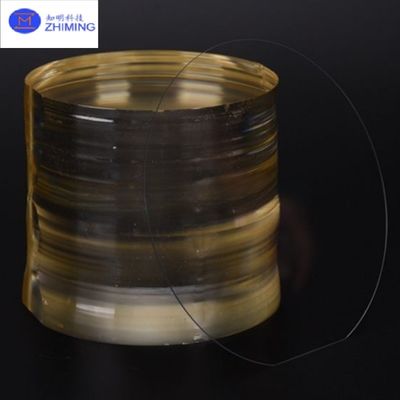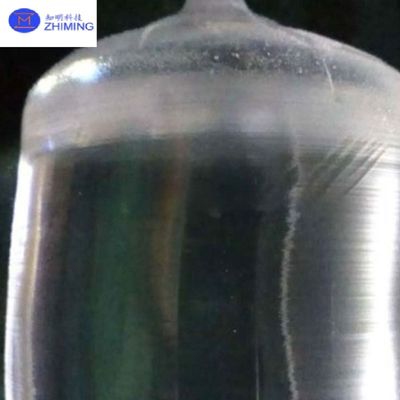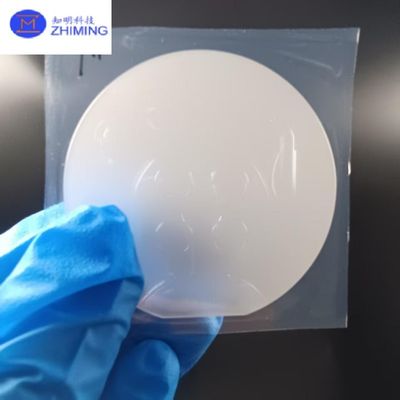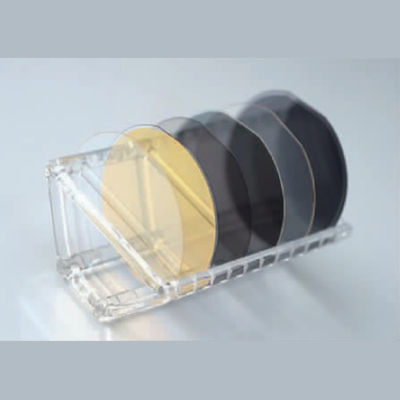|
Szczegóły informacji |
|||
| Material: | Optical Grade LiNbO3 wafes | Diameter/size: | 2”/3”/4”/6“/8” |
|---|---|---|---|
| Cutting Angle: | X/Y/Z etc | TTV: | <3μm |
| Bow: | -30| Warp: |
<40μm |
|
opis produktu
Introduce
LiNbO3 Crystals is widely used as frequency doublers for wavelength > 1um and optical parametric oscillators (OPOs) pumped at 1064 nm as well as quasi-phase-matched (QPM) devices. Due to its large Elector-Optic (E-O) and Acousto-Optic (A-O) coefficients, LiNbO3 crystal is the most commonly used material for Pockel Cells, Q-switches and phase modulators, waveguide substrate, and surface acoustic wave (SAW) wafers, etc.
Our abundance experience at growing and mass production for Optical grade Lithium Niobate on both boule and wafers. We are equipped with advanced facilities at Crystal growing, slicing, wafer lapping, polishing and checking, all finished products are passed at Testing of curie Temp and QC inspection. All the wafers are under strict quality control and inspected. And also under the strict surface cleaning and flatness control as well.
Specification
| Material | Optical Grade LiNbO3 wafes(White or Black) | |
| Curie Temp | 1142±0.7℃ | |
| Cutting Angle | X/Y/Z etc | |
| Diameter/size | 2”/3”/4”/6"/8” | |
| Tol(±) | <0.20 mm ±0.005mm | |
| Thickness | 0.18~0.5mm or more | |
| Primary Flat | 16mm/22mm/32mm | |
| TTV | <3μm | |
| Bow | -30<bow<30 | |
| Warp | <40μm | |
| Orientation Flat | All available | |
| Surface Type | Single Side Polished(SSP)/Double Sides Polished(DSP) | |
| Polished side Ra | <0.5nm | |
| S/D | 20/10 | |
| Edge Criteria | R=0.2mm C-type or Bullnose | |
| Quality | Free of crack(bubbles and inclusions) | |
| Optical doped | Mg/Fe/Zn/MgO etc for optical grade LN< wafers per requested | |
| Wafer Surface Criteria | Refractive index | No=2.2878/Ne=2.2033 @632nm wavelength/prism coupler method. |
| Contamination, | None | |
| Particles c>0.3μ m | <=30 | |
| Scratch,Chipping | None | |
| Defect | No edge cracks,scratches,saw marks,stains | |
| Packaging | Qty/Wafer box | 25pcs per box |
Properties
The fabrication of Lithium Niobate on Insulator (LNOI) wafers involves a sophisticated series of steps that combine material science and advanced fabrication techniques. The process aims to create a thin, high-quality lithium niobate (LiNbO₃) film bonded to an insulating substrate, such as silicon or lithium niobate itself. The following is a detailed explanation of the process:
Step 1: Ion Implantation
The first step in the production of LNOI wafers involves ion implantation. A bulk lithium niobate crystal is subjected to high-energy helium (He) ions injected into its surface. The ion implantation machine accelerates the helium ions, which penetrate the lithium niobate crystal to a specific depth.
The energy of the helium ions is carefully controlled to achieve the desired depth in the crystal. As the ions travel through the crystal, they interact with the lattice structure of the material, causing atomic disruptions that lead to the formation of a weakened plane, known as the "implantation layer." This layer will eventually allow the crystal to be cleaved into two distinct layers, where the top layer (referred to as Layer A) becomes the thin lithium niobate film needed for LNOI.
The thickness of this thin film is directly influenced by the implantation depth, which is controlled by the energy of the helium ions. The ions form a Gaussian distribution at the interface, which is crucial for ensuring uniformity in the final film.
![]()
![]()
Step 2: Substrate Preparation
Once the ion implantation process is complete, the next step is to prepare the substrate that will support the thin lithium niobate film. For LNOI wafers, common substrate materials include silicon (Si) or lithium niobate (LN) itself. The substrate must provide mechanical support for the thin film and ensure long-term stability during the subsequent processing steps.
To prepare the substrate, a SiO₂ (silicon dioxide) insulating layer is typically deposited onto the surface of the silicon substrate using techniques such as thermal oxidation or PECVD (Plasma-Enhanced Chemical Vapor Deposition). This layer serves as the insulating medium between the lithium niobate film and the silicon substrate. In some cases, if the SiO₂ layer is not sufficiently smooth, a Chemical Mechanical Polishing (CMP) process is applied to ensure that the surface is uniform and ready for the bonding process.
![]()
Step 3: Thin-Film Bonding
After preparing the substrate, the next step is to bond the thin lithium niobate film (Layer A) to the substrate. The lithium niobate crystal, after ion implantation, is flipped 180 degrees and placed onto the prepared substrate. The bonding process is typically carried out using a wafer bonding technique.
In wafer bonding, both the lithium niobate crystal and the substrate are subjected to high pressure and temperature, which causes the two surfaces to adhere strongly. The direct bonding process usually does not require any adhesive materials, and the surfaces are bonded at the molecular level. For research purposes, benzocyclobutene (BCB) may be used as an intermediate bonding material to provide additional support, though it is typically not used in commercial production due to its limited long-term stability.
![]()
Step 4: Annealing and Layer Splitting
After the bonding process, the bonded wafer undergoes an annealing treatment. Annealing is crucial for improving the bond strength between the lithium niobate layer and the substrate, as well as for repairing any damage caused by the ion implantation process.
During annealing, the bonded wafer is heated to a specific temperature and maintained at that temperature for a certain duration. This process not only strengthens the interfacial bonds but also induces the formation of microbubbles in the ion-implanted layer. These bubbles gradually cause the lithium niobate layer (Layer A) to separate from the original bulk lithium niobate crystal (Layer B).
Once the separation occurs, mechanical tools are used to cleave the two layers apart, leaving behind a thin, high-quality lithium niobate film (Layer A) on the substrate. The temperature is gradually reduced to room temperature, completing the annealing and layer separation process.
![]()
Step 5: CMP Planarization
After the separation of the lithium niobate layer, the surface of the LNOI wafer is typically rough and uneven. To achieve the required surface quality, the wafer undergoes a final Chemical Mechanical Polishing (CMP) process. CMP smooths out the surface of the wafer, removing any remaining roughness and ensuring that the thin film is planar.
The CMP process is essential for obtaining a high-quality finish on the wafer, which is critical for subsequent device fabrication. The surface is polished to a very fine level, often with a roughness (Rq) of less than 0.5 nm as measured by Atomic Force Microscopy (AFM).
![]()
Applications of LNOI wafer







